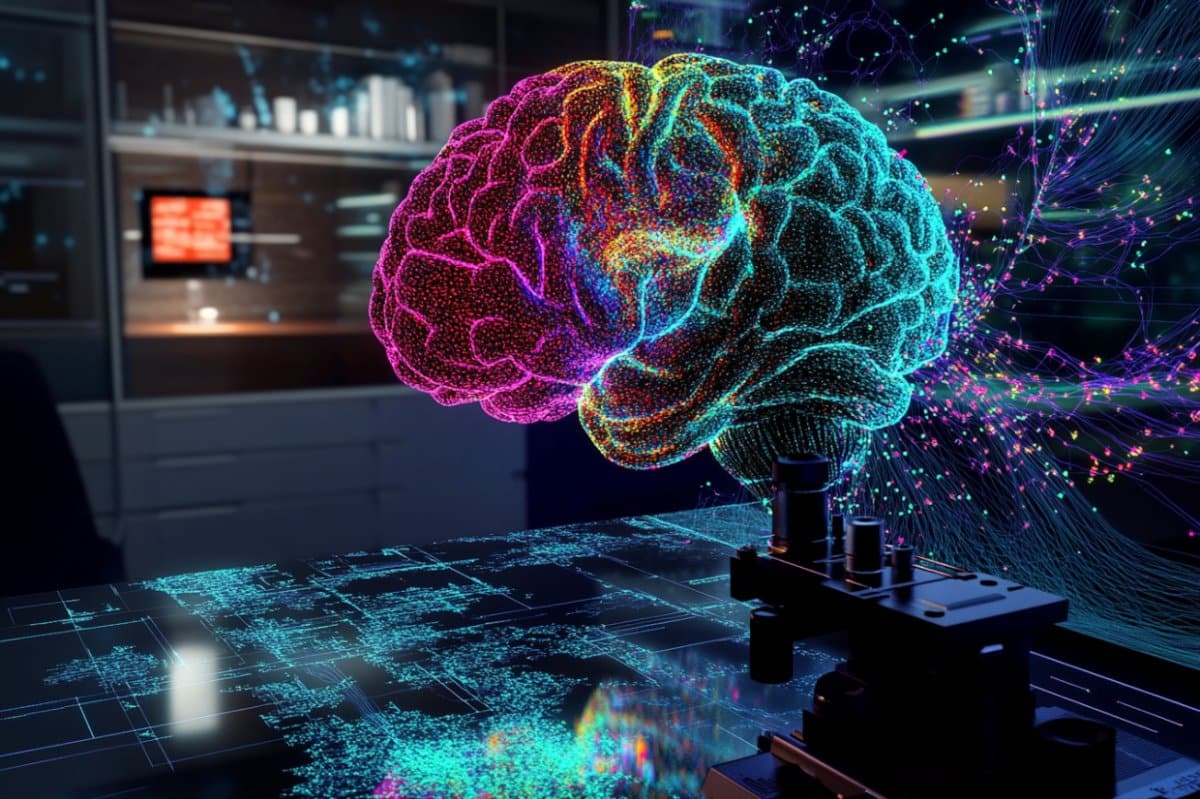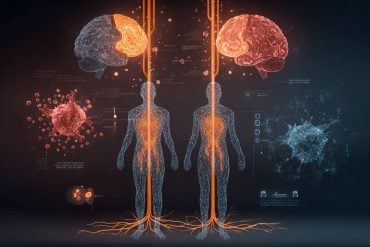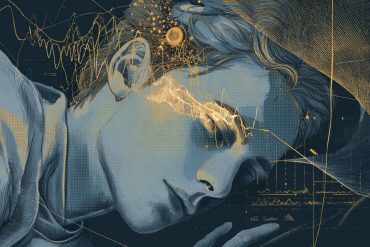Summary: A revolutionary microscopy method called LICONN enables scientists to reconstruct brain tissue and map synaptic connections using standard light microscopes. By embedding brain tissue in hydrogel, expanding it, and imaging at nanoscale resolution, researchers achieve a detailed view of neuronal architecture previously only possible with electron microscopy.
The technique also maps molecular markers, revealing not just structure but also function within neural circuits. Combining chemistry, neuroscience, and AI-powered deep learning, LICONN makes large-scale mapping of neuronal connections feasible and globally accessible.
Key Facts:
- New Microscopy Method: LICONN reconstructs brain tissue and synaptic connections at 20 nm resolution using standard light microscopes.
- Hydrogel Expansion: Brain tissue embedded in hydrogel is expanded, separating fine features to allow nanoscale imaging.
- AI Integration: Deep learning from Google Research enables automatic mapping of neural structures and synaptic connections.
Source: ISTA
Our brain is a complex organ. Billions of nerve cells are wired in an intricate network, constantly processing signals, enabling us to recall memories or to move our bodies. Making sense of this complicated network requires a precise look into how these nerve cells are arranged and connected.
“LICONN”, a new microscopy method developed by scientists at the Institute of Science and Technology Austria (ISTA) and Google Research, now helps piece together this puzzle.
Light microscopes have been evolving for centuries. Scientists use light microscopy to – literally and figuratively – illuminate the most intricate biological structures.

However, unraveling the complex details and architecture of the brain remains a seemingly impossible challenge, considering its billions of densely packed neurons, each linked to other cells via thousands of synapses.
A new microscopy pipeline called “LICONN” (light-microscopy-based connectomics), developed at the Institute of Science and Technology Austria (ISTA), now offers a breakthrough.
LICONN is the first technology beyond electron microscopy capable of reconstructing brain tissue with all the synaptic connections between neurons. It also opens up the possibility of visualizing complex molecular machinery alongside the structure of neurons, all while utilizing standard light microscopes for measurements.
This new technique was developed by Mojtaba R. Tavakoli, Julia Lyudchik, Johann Danzl, and their colleagues from the High-Resolution Optical Imaging for Biology research group at ISTA. They collaborated with the Novarino group at ISTA and Michal Januszewski and Viren Jain from Google Research.
The method is now published in Nature.
New possibilities with LICONN
Mojtaba R. Tavakoli opens a curtain, revealing a light microscope with endless wires connecting the optical instrument to a computer. The screen’s lights shine bright—glooming shades of green and pink illuminate the almost pitch-black room.
“That’s the hippocampus—a brain region responsible for memory formation,” says Tavakoli and points to the screen.
“The fluorescent dots you see are molecules involved in synaptic transmission.” The ISTA graduate moves the frame and adjusts the settings.
LICONN is the Danzl group’s newest microscopy technique. It acts like a meticulous puzzle solver, assembling the intricate brain networks by piecing together the finest neuronal processes and correctly linking each synaptic connection to its respective neuron.
“Up to now, no light microscopy technique could do that,” says Johann Danzl, a trained medical doctor and physicist, now professor at ISTA.
“It was a longstanding goal of our group to build such a pipeline for reconstructing brain tissue. And LICONN can do this while placing specific molecules into the context of the structural reconstruction.”
What stands out is that the image acquisition is done on a standard off-the-shelf microscope, which is very fast and offers multicolor capability. The technique can be reproduced anywhere in the world, as scientists do not require high-end, expensive equipment that would be needed for current approaches for brain tissue reconstruction.
To obtain this level of detail, the resolution has to be extraordinarily high, around a few tens of nanometers, 10,000 times smaller than the width of a human hair. But how to accomplish that? Expertise in chemistry comes in handy.
Zooming with a gel
For LICONN, the team made use of the chemical and physical properties of hydrogel, a three-dimensional polymer network. Hydrogel has similar characteristics to baby diapers: it can take up water and swell, but does so in a highly controlled manner.
The brain tissue of interest is embedded in this hydrogel.
“Cellular components are linked to the hydrogel, meaning the cells’ fine ultrastructure is imprinted onto the gel and preserved for microscopy,” explains Danzl. Before imaging, the structures are expanded by adding water to the material.
As a result, the gel elongates in size in every direction but maintains the relative spatial arrangements of the tissue’s structures with extremely high fidelity.
For comparison, traditional light microscopes are classically limited in their resolving power to around 250-300 nanometers. While this is adequate to visualize larger cellular structures, it is insufficient to reconstruct the densely packed brain tissue.
“The hydrogel expansion pulls features of the brain tissue so far apart that we can resolve them with a standard light microscope. This method enhances the effective resolution by 16 times, achieving a resolution better than 20 nm,” Tavakoli explains.
Research at the intersection of disciplines
Neuroscience and chemistry were not the only fields that found their way into this project. Methods from computer science played a crucial part in the pipeline’s development. This is because capturing microscopic images results in the collection of numerous data points. As such, the intricacy of the datasets reflects the brain’s complexity.
Thus, manually interpreting and reconstructing all the neuronal structures on a sizable scale would be far too laborious. Therefore, Google Research’s deep-learning techniques were trained to segment the individual cells in the tissue.
“Automating the identification of neurons and their elaborate structures on a wider scale using artificial intelligence made the daunting task of reconstructing all the cellular components practically tractable,” explains Viren Jain from Google Research.
“The ability to concomitantly visualize specific molecules adds a new quality of information.”
Julia Lyudchik, a PhD student and computer scientist in the Danzl group, played an instrumental role in interpreting the complex datasets.
“Thanks to the exceptionally high resolution of the data, it was possible to automatically detect the synaptic connections between neurons and to transform raw brain imaging data into detailed connectivity maps. This is a complex image processing challenge,” Lyudchik explains.
“In addition, the methods had to be both efficient and scalable, given that even a small piece of brain tissue can contain tens of thousands of synaptic connections.”
LICONN makes it possible to map the location of specific molecules onto the neuronal reconstructions, such as those involved in the transmission of signals between neurons at synapses.
Lyudchik’s artistic vein helped her create stunning 3D renderings of the brain network, as visualizations are powerful tools to make complex scientific data more accessible and interpretable.
Unlocking new details in the brain’s architecture
By following this comprehensive pipeline, scientists can meticulously reconstruct brain tissue and visualize neuronal connections and networks.
The interplay between experimentation and analysis across disciplines—from imaging and experimentation at ISTA to Google Research’s application of advanced deep learning technologies and the computational analysis at ISTA—results in 3D visualizations of the brain’s architecture at a new level of complexity.
“LICONN brings us a step closer to assembling the puzzle pieces of the mammalian brain and better understanding its functioning both in health and disease,” Danzl concludes.
About this brain mapping and neurotech research news
Author: Andreas Rothe
Source: ISTA
Contact: Andreas Rothe – ISTA
Image: The image is credited to Neuroscience News
Original Research: Open access.
“Light-microscopy based dense connectomic reconstruction of mammalian brain tissue” by Mojtaba R. Tavakoli et al. Nature
Abstract
Light-microscopy based dense connectomic reconstruction of mammalian brain tissue
The information-processing capability of the brain’s cellular network depends on the physical wiring pattern between neurons and their molecular and functional characteristics.
Mapping neurons and resolving their individual synaptic connections can be achieved by volumetric imaging at nanoscale resolution with dense cellular labelling.
Light microscopy is uniquely positioned to visualize specific molecules, but dense, synapse-level circuit reconstruction by light microscopy has been out of reach, owing to limitations in resolution, contrast and volumetric imaging capability.
Here we describe light-microscopy-based connectomics (LICONN).
We integrated specifically engineered hydrogel embedding and expansion with comprehensive deep-learning-based segmentation and analysis of connectivity, thereby directly incorporating molecular information into synapse-level reconstructions of brain tissue.
LICONN will allow synapse-level phenotyping of brain tissue in biological experiments in a readily adoptable manner.






